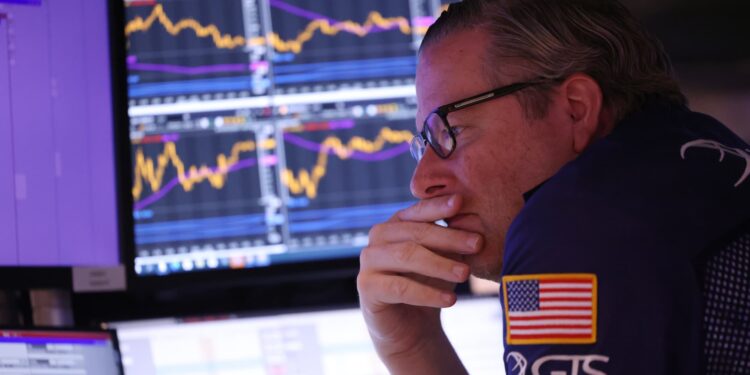The rise and fall of the “Nifty Fifty” stocks in the 1970s is a cautionary tale for investors in the Magnificent Seven craze, according to BCA Research. The “Nifty Fifty” refers to a loose group of stocks including Coca-Cola , IBM , Xerox and Pfizer , that rose to prominence in the 1970 to 1973 bull market. BCA Research recently compiled a basket of 26 of these names and found that it generated annualized returns of 64% in that period before cratering 61% in the subsequent 1973-1974 bear market. “The Magnificent Seven may not be the reincarnation of the Nifty Fifty, but investors can learn from past manias and panics,” wrote Doug Peta, BCA’s chief U.S. investment strategist, referring to the trend as a “cautionary tale about groupthink.” The comments from BCA come as the Magnificent Seven stocks continue powering the market to new heights despite a modest pullback this summer. The surge stems from ongoing bets around growth stocks and the artificial intelligence theme, especially as the Federal Reserve begins cutting rates. Nvidia has outpaced the group, surging 147% year to date. NVDA YTD mountain Nvidia in 2024 There are plenty of differences between the Nifty Fifty and the Magnificent Seven, Peta said, including megacap tech names’ longer track record of outperforming the market. While the 1970s phenomenon may not be an “exact blueprint” of what’s to come, concerns have emerged, including elevated profit growth expectations and valuations reaching new heights, Peta said. This, combined with challenges around regulatory scrutiny and index weightings, could create a murky setup for these megacap tech mainstays, he added. “Though we don’t know if it fits the Magnificent Seven now or will at some later date, it most certainly applied in the early seventies, when too many investors became overly enamored with a small cadre of growth stocks and their future earnings prospects,” Peta said. Given this setup and expectations for an “imminent” recession, the firm recommends a defensive investing stance. “Independent of our take on the business cycle, however, the history of the Nifty Fifty suggests that investors may benefit from considering how long post-crisis investment leaders’ outperformance will persist amidst major shifts in the monetary and fiscal policy backdrops,” the strategist added.







